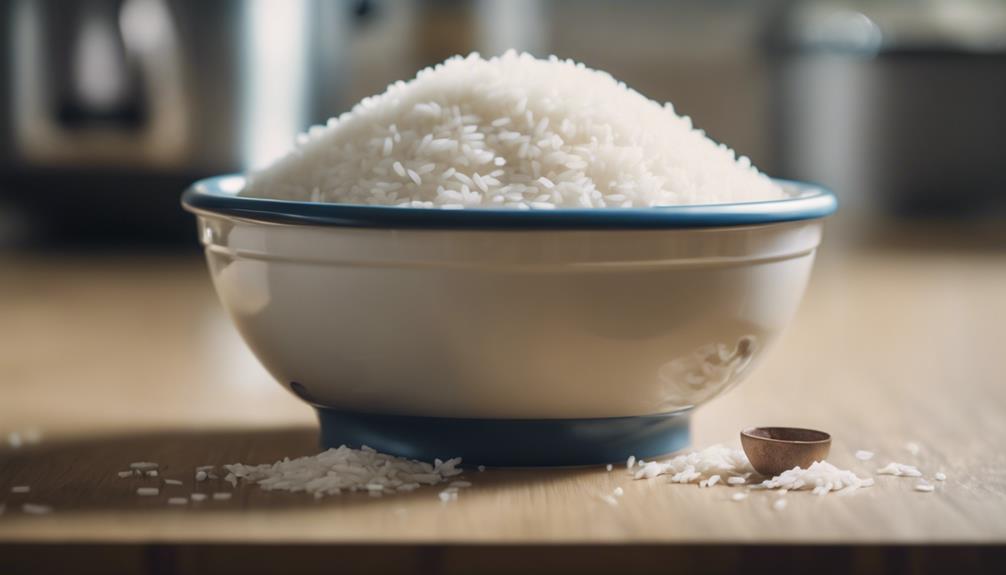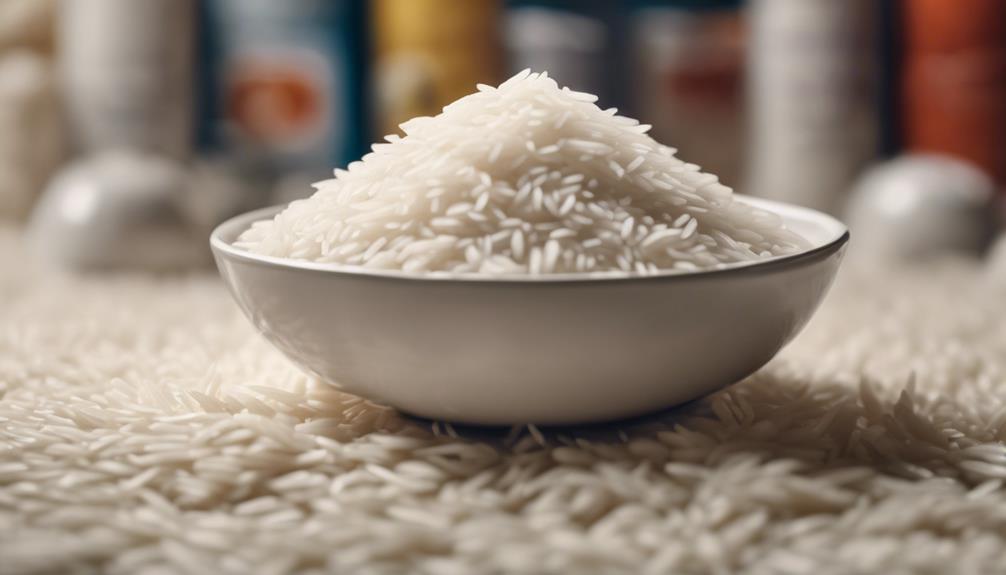How Much White Rice Can a Dog Eat
When deciding how much white rice to give your dog, remember to account for their dietary needs and digestive limits. Control portions carefully and consult a vet for guidance. Balance rice intake with other parts of their diet to prevent any adverse effects. Adjust portions based on factors like age, size, and health condition; puppies and seniors may have different requirements. Too much white rice can lead to digestive issues and weight concerns, so be cautious. Using white rice as a supplement can aid digestion, but make sure it complements a balanced diet. Start slowly when adding rice and watch for any reactions.
Key Takeaways
- Consider dog's size, age, and health for appropriate portions.
- Start with small amounts and monitor digestive response.
- Avoid overfeeding to prevent digestive issues and weight gain.
- Consult with a vet to ensure nutritional balance.
- Gradually introduce rice to the diet to prevent upsets.
Ideal Serving Size for Dogs

When considering the ideal serving size of white rice for your dog, it is important to be mindful of their dietary requirements and digestive capacity. Portion control plays a vital role in ensuring your dog receives the necessary nutrients without overloading their system. It is recommended to consult with a veterinarian to determine the appropriate amount of white rice to incorporate into your dog's diet, taking into account factors such as their size, age, and activity level. Maintaining nutritional balance is key to preventing any potential digestive issues or nutrient deficiencies. By carefully monitoring the portions of white rice given to your dog and balancing it with other essential components of their diet, you can help support their overall health and well-being.
Factors Influencing Rice Consumption
Considering various factors such as your dog's age, size, and overall health condition can influence the amount of white rice they can safely consume as part of their diet. Portion control is important to prevent digestive issues that may arise from overfeeding. Canine digestion varies based on the individual dog, so it's vital to monitor their response to rice intake carefully. Larger dogs may tolerate a bit more rice than smaller breeds, but it's still important not to exceed recommended amounts. Age also plays a role, as puppies and senior dogs may have different dietary requirements. Always consult with your veterinarian to determine the appropriate serving size of white rice for your furry friend, taking into account these factors to promote their well-being.
Risks of Overfeeding White Rice

Overfeeding white rice to your dog can lead to potential health risks that should not be overlooked. When it comes to incorporating white rice into your dog's diet, it's important to exercise proper portion control to prevent any adverse effects. Here are some potential dangers associated with overfeeding white rice to your furry friend:
- Digestive Issues: Excessive consumption of white rice can cause digestive upset in dogs, leading to symptoms like diarrhea or constipation.
- Nutritional Imbalance: Over-reliance on white rice can result in a lack of essential nutrients in your dog's diet, leading to deficiencies over time.
- Weight Gain: White rice is calorie-dense, and overfeeding can contribute to weight gain in dogs, potentially leading to obesity-related health issues.
White Rice as a Dietary Supplement
To guarantee a balanced diet for your dog, incorporating white rice as a dietary supplement can provide added nutrients and variety to their meals. White rice offers nutritional benefits such as being easily digestible, making it a suitable option for dogs with sensitive stomachs or digestive issues. It can help in soothing an upset stomach and providing a bland diet during periods of gastrointestinal upset. The blandness of white rice can also be beneficial during episodes of vomiting or diarrhea. Additionally, white rice serves as a good source of energy due to its carbohydrate content, which can be especially useful for active dogs. When used in moderation and as part of a balanced diet, white rice can contribute positively to your dog's overall digestive health.
Transitioning to a Rice-Inclusive Diet

Shifting your dog to a rice-inclusive diet can be done gradually over a period of time to guarantee a smooth adjustment to this new addition to their meals. When changing, remember to take into account the following:
- Benefits: Introducing white rice can provide your dog with easily digestible carbohydrates, which may help with digestive issues or sensitive stomachs.
- Preparation Techniques: Cook the white rice thoroughly and make sure it is plain without any seasonings or additives that could be harmful to your pet.
- Adaptation Period: Start by mixing small amounts of rice with your dog's regular food, gradually increasing the proportion of rice over a week to avoid any digestive upsets.

If Richie Bedard is a dog food expert, author, or any other figure in the field of dog nutrition that emerged after September 2021,






